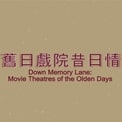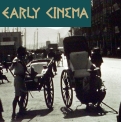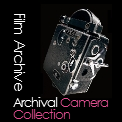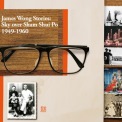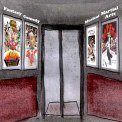 Collections
Collections Down Memory Lane: Movie Theatres of the Olden Days
Down Memory Lane: Movie Theatres of the Olden Days The Development of Theatres in Hong Kong
The Development of Theatres in Hong Kong Evolution of Theatres
Evolution of Theatres
Since the appearance of motion pictures movie theatre had become one of the most popular hang-out spots for all. Every theatre was uniquely constructed and each became a landmark in itself. As early as in the 1920s, individual screening activities appeared in Hong Kong; and by the 1970s, movie-going had become the most popular form of entertainment for Hong Kong people. Theatres evolved in terms of construction and technologies, mirroring the ever-changing lifestyles of the general public. Before the 1950s, theatres were located mainly on Hong Kong Island and in Kowloon; by the mid-1960s began to open in the New Territories, some as remote as in Sai Kung, Tiu Keng Leng, and outlying islands.
Urban centre theatres and community theatres were drastically different in class. Theatres in urban centres showing first-run foreign films were magnificently-built, well-oiled palaces of entertainment. Audience was from the rich and powerful – movie-going being part of the life of high-society. Queen's Theatre in Central was at the melting pot of Chinese and foreign cultures. Its staffs were all well-mannered and well-trained for serving foreigners. Porters might also welcome guests in the lobby sometimes.
Community theatres on the other hand were noisy and crowded, but filled with warmth and local sentiments. They were like community halls where people gathered. Staff and audience were like neighbours. Going to the theatre was a special treats for many grassroots families.
The age of mini theatres ushered in the 1980s with the development of new towns. Space was also reserved for theatres in large housing projects. However, the rise of multiplex brought about the breakdown of theatre networks after 2000. Theatres are now nowhere to be found in Wan Chai, Sham Shui Po, and railroad towns from Sheung Shui to Tai Po, not only inside huge shopping malls. Watching movies has become merely one of the activities people do inside these malls.
| 1907 | The Victoria New-Style Moving Picture Theatre opened on Des Voeux Road, Central. |
| 1910 | Bijou Scenic Theatre opened on Wyndham Street, Central. Kwong Chee Theatre, the first theatre in Kowloon, also opened in the same year. |
| 1913 | In April, "Sound and Sight in Moving Pictures: Kinetophone" was shown in City Hall. It involved connecting Kinetophone with phonograph for images and sound. |
| 1941 | There were about 35 theatres in Hong Kong (including Cantonese opera theatres). |
| 1941-1945 | The war broke out. In January 1943, Shadanhojin Film Distribution was established to control all film distributions and divide all Hong Kong theatres into 5 levels. |
| 1948 | China Theatre, the first new theatre after the war, opened on 28 August. |
| 1953 | 3D film in colour was the trend. Besides Hollywood productions, the first Chinese 3D film A Battle in an Old City was shown in Prince’s Theatre. |
| 1956 | Hong Kong-Kowloon & New Territories Theatre Association Limited was registered. It became Hong Kong Theatres Association Limited in 1988. |
| 1961 | At the end of October, Police Licensing Office ordered all theatres to enforce the “Each ticket admits one person” policy which severely hampered the business of community theatres. |
| 1969 | There were 103 theatres in total with 120,365 seats. Viewership was also one of the highest in the world. |
| 1980 | Public Entertainment Facilities (Amendment) Bill was passed by the Legislative Council which permitted the operation of mini theatres inside a building. |
| 1982 | Smoking (Public Health) Ordinance came into force, requiring theatres to designate at least half of the seats as non-smoking seats. In August, Capital Theatre in Sham Shui Po opened, being “the first mini theatre in Hong Kong”. |
| 1985 | In February, UA Shatin opened with six houses and a large snack bar. The American-style multiplex management system was introduced to Hong Kong. |
| 1987 | Controversy over on "film censorship without legal ground" arose. Theatres, distributors and film companies established Hong Kong Motion Picture Industry Association to propose a draft film censorship bill. |
| 1987-1990 | Traditional theatres like Imperial, Olympia, Silver, South China and Sunbeam were rebuilt into 2-house theatres. |
| 1988 | Film Censorship Ordinance was passed, introducing a new film classification system. Patrons under 18 years old would be prohibited from admission to Category III films. |
| 1989 | Imperial Theatre was the first to sell tickets through a computer system. UA Queensway, opened in March, also used a computerised ticketing system. |
| 1997 | The New Imperial Theatre, the first to screen digital film, showed Our Last Day on 1 July. |
| 2004 | Empire Theatre in Mong Kok, the last theatre with dress circle, closed on 15 April. |
| 2007 | In February, 4D Extreme Screen opened in the airport, providing real sensory thrills. In June, UA MegaBox IMAX, the first IMAX theatre in Hong Kong, opened in Kowloon Bay. |
| 2009 | Yaumati Theatre became the first theatre to be assessed as a grade two historic building. |
